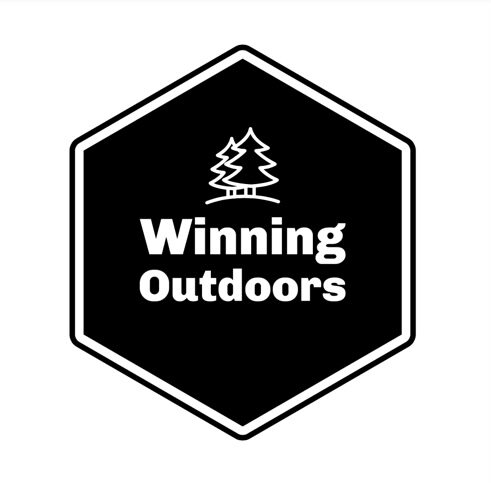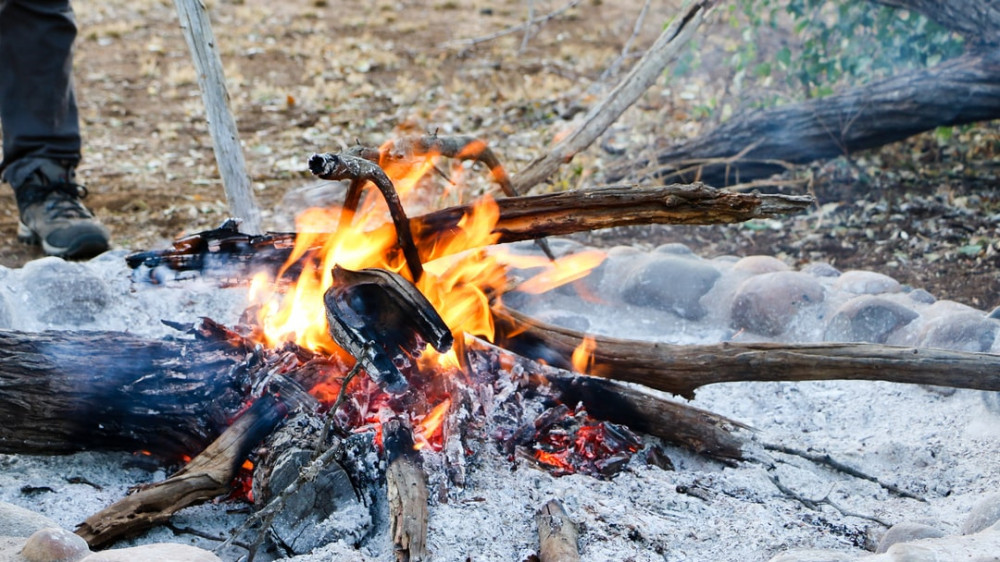Having a campfire while spending time outdoors go together like milk and cookies or PB&J. While there are seasoned professionals who build campfires regularly, there are also some that may not know how to build a campfire safely. With 90% of the wildfires being started by campfires, there is definitely room for improvement. Please take a look at the information provided. If you want to know how to build a perfect campfire, it begins with safety!
Prepping the Site
If you are just arriving at your camp site, don’t assume the fire pit (if there is one) is cold. I have seen numerous families burn a fire up until time for them to pull out. Not only does this present a hazard when you arrive, but could potentially cause a fire prior to your arrival when leaving hot coals.
Before you build your campfire, it is important to check the weather. Changes in conditions such as gusts of wind could cause embers to scatter and create fires in other locations. Even if you check the weather prior to, it is a good idea to keep a weather radio with while outdoors to notify of changing hazards.
It is just as important to check with you local fire service to determine if there are any fire restrictions, such as bans, in place in your area. This is a bigger problem in the drier months, but is a good habit to have no matter the time of year. Where you are camping can determine who you should call and what additional restrictions could be in place; differences in a campground vs. a National forest could vary greatly.
If possible, build your fire in a pit, such as a burn barrel, rather than on the ground itself. There is a potential for the fire to spread underground, following decaying material and root systems. The ground surrounding your planned fire area should be surrounded by gravel or bare dirt for at least 15 feet in all directions. Ensure that there are no nearby shrubs, low hanging limbs, vehicles, etc. Heat radiates much further than the flames themselves. A good rule of thumb is to have vertical clearance at least 3x’s the height of the flames.
Starting the Fire
Start your fire with dry twigs and small sticks. Using material such as cardboard or paper to start your fire is hazardous as it will separate and embers will begin flying in the air. They can travel great distances before landing and starting additional fires.
When the fire grows you can add larger pieces of wood. It is important not to cover up the fire initially and smother it. A fire must have oxygen to burn. As your begin to place large pieces of wood on the fire, point them toward the fire and gradually push them toward the flames as they being to burn.
NEVER use flammable liquids or aerosols to ignite or keep your fire burning. Items such as gasoline, kerosene, diesel fuel, lighter fluid, etc. can cause severe injury when applied.
Keep your campfires small to avoid them becoming unmanageable. 2’x2′ or 3’x3′ should be sufficient. Keep plenty of water and a shovel nearby, and fire extinguisher if you have one. In an emergency, you can quickly put out the fire rather than looking for materials to put it out after the emergency.
Stack extra firewood upwind from the fire. Never leave your campfire unattended!
Enjoying Your Campfire
Keep children and pets away from the fire at a safe distance. Never leave them unsupervised around the fire. This is a great time to talk to your children about fire safety. If you have your fire extinguisher on site, show them how to use it. Explain what the water and shovel are there for.
Something as small as roasting marshmallows can cause huge problems. Simply shaking the marshmallows could result in it landing in the leaves while on fire. Of course, there are different hazards present depending on your activity. Please assess the hazards for your activity accordingly and always play it safe.
Extinguishing Your Campfire
When extinguishing the fire, drown it with water. Stir it with a stick to ensure all embers, coals, and sticks are wet. If you do not have water, use dirt. Continue adding and stirring until all materials are cooled. Do not bury your coals! They can smolder and start to burn again. At the very least, they stay hot for longer periods when covered.
It’s not uncommon to cook in an underground oven. It’s called pachamanca, a traditional way of cooking that dates back to the Inca Empire. The word “kālua” (“to cook in an underground oven” in the Hawaiian language) is very common at lūʻau feasts. The first pig I had cooked this way was in Maui, and it was delicious. I digress, don’t just cover up your coals and leave, it’s dangerous!
If Things Go Bad
While having a fire is almost expected for an outing, it can be dangerous. So far, we have discussed having a plan and following it to ensure the safest experience possible. Unfortunately, campfire accidents send thousands of people to emergency rooms with burn injuries every year. According to the NFPA, approximately 70% of campfire burns are caused by embers rather than flames. This tells me that when the fire is visible, most people know to stay at a safe distance as has been discussed.
Fire pits can retain heat up to 12 hours after being extinguished, enough to cause a severe burn. Campfires are the leading cause of camping injuring for children in the US.
What to do if your clothes catch on fire:
- STOP, DROP & ROLL – Start teaching your children this early on. You do not have to be camping to encounter a fire.
- Cool the burn with cool water (Not Cold)
- Remove all clothing and jewelry from the affected area
- Loosely cover the area with clean dry sheet or bandages
- Seek medical attention
In addition to the hazards present from potential burns, humans cause nine of every ten wildfires. Not only is this devastating to the forests and ecosystem, wildfires also consume many homes each year due to wildfires as well. As was mentioned earlier, ensure campfires are allowed in your area and that the proper precautions are being taken.
Conclusion
Having discussed some hazards that can be present while enjoying a campfire, I want to stress that this is not to discourage camp fires or to scare anyone. Having a camp fire is one of the most enjoyable parts of being outdoors. Many stories will be shared and memories made around a camp fire, as will be shared about those memories for years to come. While it is important to make these memories, please put for the effort to make sure it is happy stories and memories that are made.
If you have some campfire stories you’d like to share, please leave us a comment and let us know. If you enjoyed the post, please sign up for our weekly newsletter for updates and topics as they are published.
Keep Winning Outdoors!




